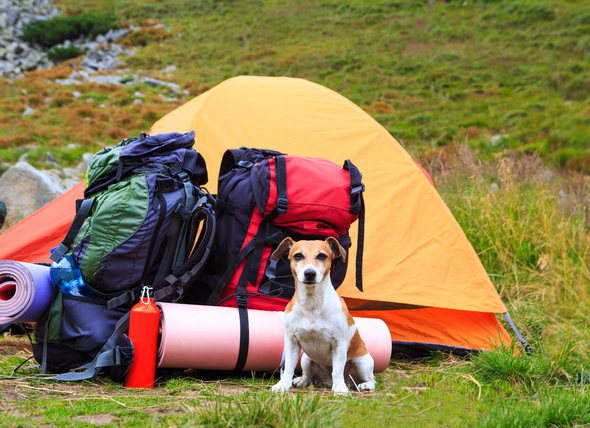
Camping is often the best way to relax, especially when you can bring your dog along for the ride. In fact, camping offers everything a dog could want – outdoor adventure, delicious food cooked over an open fire, and quality time with her favorite people.
While dog camping is fun, proper preparation is important. By properly preparing before camping with your dog, you can maximize comfort and safety, reduce stress, and create the most memorable experience with your favorite four-legged dog.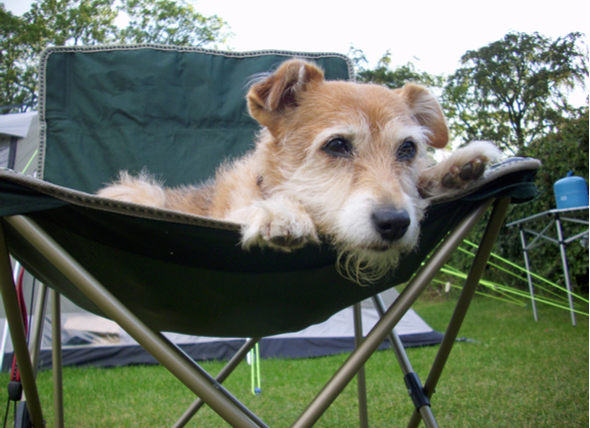
Know Your Pet: Is camping with dogs right for you?
The first step before going camping with your dog is to realistically assess whether it’s in your dog’s best interest. “Let your dog’s personality guide you,” advises Dr. Jamie Stromberg, a veterinarian and owner of Brooklyn Pet Hospital in Brooklyn Park, Minnesota. “Start with short trips not far from home in case your pet gets stressed.”
Does your dog become anxious in new environments, or does she respond easily to new stimuli? Dr. Stromberg notes that if so, she may not like dog camping.
Driving in campgrounds and unfamiliar people, animals, sights and sounds can be stressful.
Another pet safety issue is your dog’s health and age. “Check the weather forecast,” says Dr. Stromberg. “Small dogs and puppies have a hard time staying warm in cold or wet weather, and certain breeds (short-nosed breeds such as bulldogs, pugs and Boston terriers) and older dogs may not be able to stay cool in the heat.”
If your dog has developed health problems, it’s best not to expose him to the challenges of camping – opt for milder activities closer to home.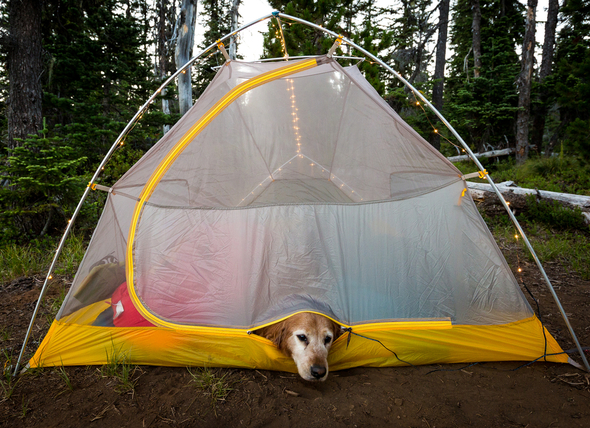
Introducing your dog to camping gear
Your dog may not know she’s going camping, but you can help her mentally prepare for dog camping.
Mark Ehrman explains, “To make your camping trip as easy as possible, start by letting your dog know about all the new and exciting camping gear in the house.”
He said anything new can be scary for dogs, especially if they’ve left their comfort zone.
“We introduce one object at a time from a distance and then let the dog approach them on its own terms,” Elman said. “Never force your dog to approach something or bring something to the dog.”
He suggests that for noisy items or those that puff up, first introduce them in their deflated or quiet state to slowly build familiarity. You can also use dog treats to encourage closer observation, he notes.
Planning a doggy slumber party in your tent? Elman suggests getting your dog used to going indoors and spending time inside. He states, “One way to do this is to think of it as a large crate training.”
“Practice at home before you go camping in the wilderness. Spend a night in the backyard and make sure she doesn’t mind sleeping in a tent.”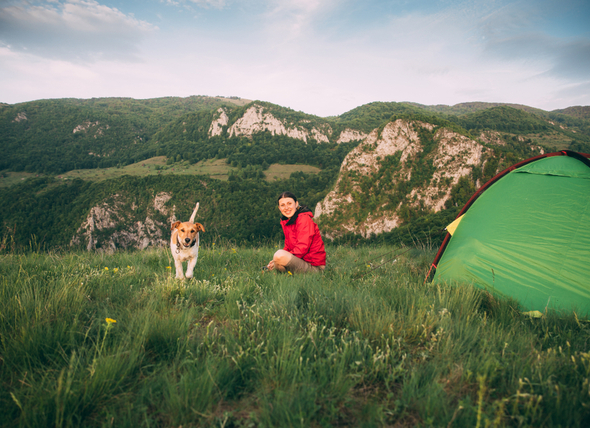
Practice recall training and camp dog management
When you’re camping with your dog, it’s wise to plan ahead on how you’ll manage your dog at the campground. First, make sure the campground you choose allows pets and read the rules of the game carefully.
While it’s highly recommended that you always keep your pup on a leash, Elman suggests recalling dog training to prevent your pet from wandering off or disturbing other campers.
Elman explains, “If your dog is running off course, you have to make sure you’ve taught him the reliable recall, ‘leave’ and ‘stay’ commands.” “Recall is one of the most important commands for any dog while outside, and you can’t practice it enough!” Keeping your dog out of harm’s way or away from wildlife may be a life-saving method when camping.”
Elman also suggests bringing some kind of dog leash (a lead, not a chain) and a crate or portable dog crate to keep your dog safe while you prepare or use the restroom.
Once you arrive, take your pup camping before settling in. “There will be a lot of new smells, sounds and sights. If you familiarize your dog with the location and the people first, he’s more likely to settle down while you’re settling in,” Elman explains.
Protecting Your Pet’s Health with Vaccines and Preventive Treatments
When you take your dog camping, you must also be aware of the safety and health issues of pets that may not appear in everyday life at home. In the wilderness, we find insects, wildlife, parasites and other dangers and it is best to always be prepared.
Dr. Stromberg says, “Before you leave for a camping trip, make sure you know who you should call if your pet has an emergency.” “Call several local veterinary clinics ahead of time to find out their emergency policies.”
Before taking your dog camping, check to make sure your dog’s vaccinations are up to date, too. Dr. Stromberg notes that if pet owners are concerned about ticks, they may also want to consider the Lyme disease vaccine, or the Leptospirosis vaccine. The Leptospirosis vaccine protects your pet from serious bacterial infections that can be contracted from exposure to “opossums, raccoons, rodents, foxes, or coyotes”.
If you don’t have your dog on a monthly medication for heartworms, or give your dog flea and tick medication, then you’d better start now. Scratching – especially in heavily wooded areas – can give your dog Lyme disease and herpes, and mosquitoes can spread heart disease.
“There are many flea and tick products available, including topical preparations, collars and oral medications,” she says. “Your veterinarian can help you choose the best product for your situation.”
It’s best to check with your veterinarian to find the right prescription for your pet’s medication rather than trying over-the-counter options that may not work.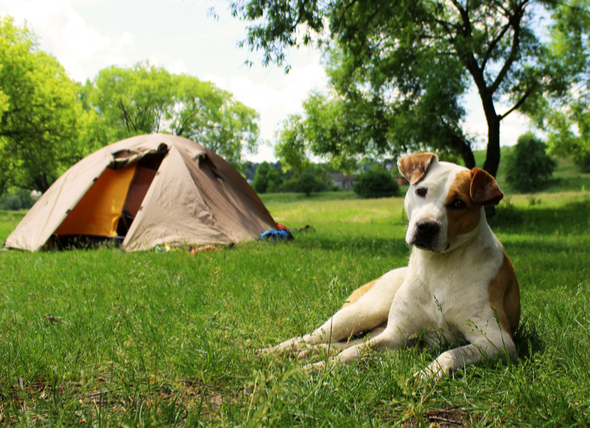
Bring your dog camping essentials
When camping, don’t forget to pack for your dog’s and your own needs. In addition to the “essentials of food, bowls and poop bags,” Ehrman suggests bringing familiar bedding, bug or pest-proof dog food containers, light-up collars or nightlights, dog bite repellent and, of course, dog toys.
First-time dog campers may want to pack a few “cozy items” like blankets or stuffed animals to remind them of home. For dogs that like to roll around in the dirt, remember to pack dog shampoo and towels.
It’s also a good idea to bring dog first aid supplies. “If your dog is going for a swim or out into the woods, consider bringing some gauze and an elastic bandage in case he gets a cut or scrape,” advises Dr. Stromberg.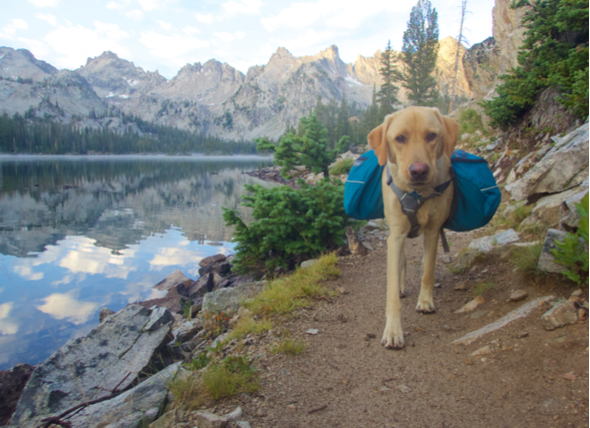
Prioritize the safety of your pets
Always put your pet’s safety first during any outdoor dog camping event. Dr. Stromberg reminds campers to make sure dogs are on a leash, have clean water, and are not placed in excessive heat.
“Never leave your dog in the car in warm weather,” warns Dr. Stromberg. “Even in the shade with the windows open, the temperature inside the car can be 20 degrees or more warmer than outside.” Dr. Stromberg adds, never hesitate to ask your veterinarian for safety advice. They are there to help.
With proper preparation, camping with your dog is a perfect opportunity for you to share your love of nature with your pet. If you and your pet are on an airplane and the weather forecast is good, why not break the rules and give it a shot? Take some time to relax, get some fresh air, and let your pet enjoy time outdoors with you.

